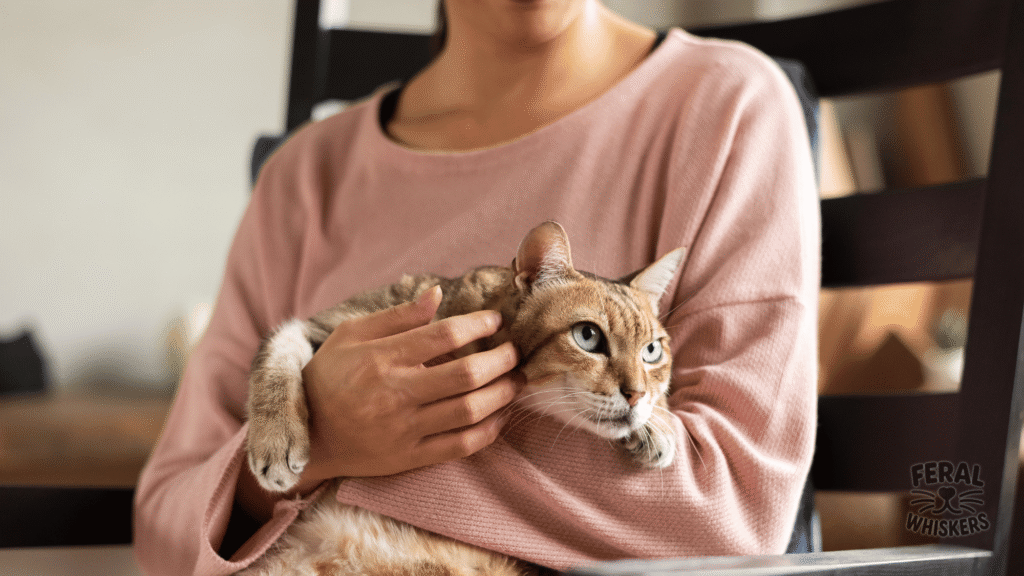📌 More Than Just a Happy Sound

Most people think cats purr only when they’re happy — curled up on your lap, basking in the sun, or enjoying chin scratches. But here’s the fascinating twist: purring is much more than a simple “I love you.”
Science shows that cats also purr when injured, stressed, anxious, or even dying. That means this gentle hum serves multiple functions — some of them astonishingly therapeutic.
👉 Let’s unpack the magical science behind the purr.
🦠 Fascinating Purr Facts
1. Purring Is a Healing Mechanism 🩹
Cats purr in a frequency range of 25 to 150 Hertz. Studies show these vibrations stimulate the release of certain growth factors, promote bone density, and aid overall healing. Remarkably, these same frequencies are used in physical therapy devices for humans.
2. Purring Helps Broken Bones Heal 🦴
Veterinarians note cats recover more quickly than dogs from fractures and surgeries. One theory? The vibrations strengthen bones and promote faster repair. A self-soothing, self-healing sound — evolution at its finest.
3. Purring Reduces Pain & Stress 🧘
Like meditation for cats, purring triggers endorphin release that calms their nervous system. Cats often purr during stressful events — vet visits, illness, or injury — to ease their anxiety. Think of it as a built-in stress ball.
4. Mother-Kitten Language 👩👧
Newborn kittens are blind and deaf. Their mother’s purr is like a GPS beacon, guiding them to warmth, safety, and milk. Purring becomes the first “comfort language” kittens learn and use to bond with their mother.
5. Cats Purr for Humans, Too ❤️
Many cats learn to use a special “solicitation purr” — often mixed with a high-pitched cry — that mimics a baby’s cry. This sound is nearly impossible for humans to ignore. Translation: “Feed me. Now.” Evolution has designed cats to hack our hearts!
6. Not Only When Happy 😺😿
Yes, cats purr when relaxed and content. But they also purr after accidents, in hospital cages, or even in their final moments. This wide range of contexts shows purring is not only for joy but also for comfort and resilience.
7. Humans Benefit Too 💡
Studies suggest that living with a cat — and being around their purring — can lower human blood pressure, ease stress, and improve heart health. Some even theorize it helps us heal physically by being exposed to those same vibration frequencies.
🌿 Holistic Insights
- Encourage healthy purring: Provide cozy, safe spots for rest and affection.
- Recognize context: A cat purring at the vet may not be happy — it’s self-soothing.
- Mutual therapy: When your cat rests on your chest purring, it nurtures both of you.
❓ FAQs
Q1: Do big cats like lions or tigers purr?
Some smaller wild cats (cheetahs, bobcats) purr. True roaring cats (like lions) can’t sustain a continuous purr the way house cats do.
Q2: Why does my cat purr then bite me?
Mixed signals! They may be happy at first, but overstimulated after too much petting. Always combine purr context with tails, ears, and eyes.
Q3: Does purring mean my cat isn’t in pain?
No. Many cats purr while in pain. It’s a comfort tool, not proof they’re fine. Always look for other signs of illness or distress.
💡 Final Thoughts
The feline purr is a miracle of nature — a sound that expresses love, reduces stress, and possibly heals bones. It’s a combo of communication, comfort, and survival wrapped in a soothing hum.
✅ Key takeaway: Purring isn’t just happiness; it’s a superpower that helps cats survive, thrive, and even extend their comfort to us, their humans.

